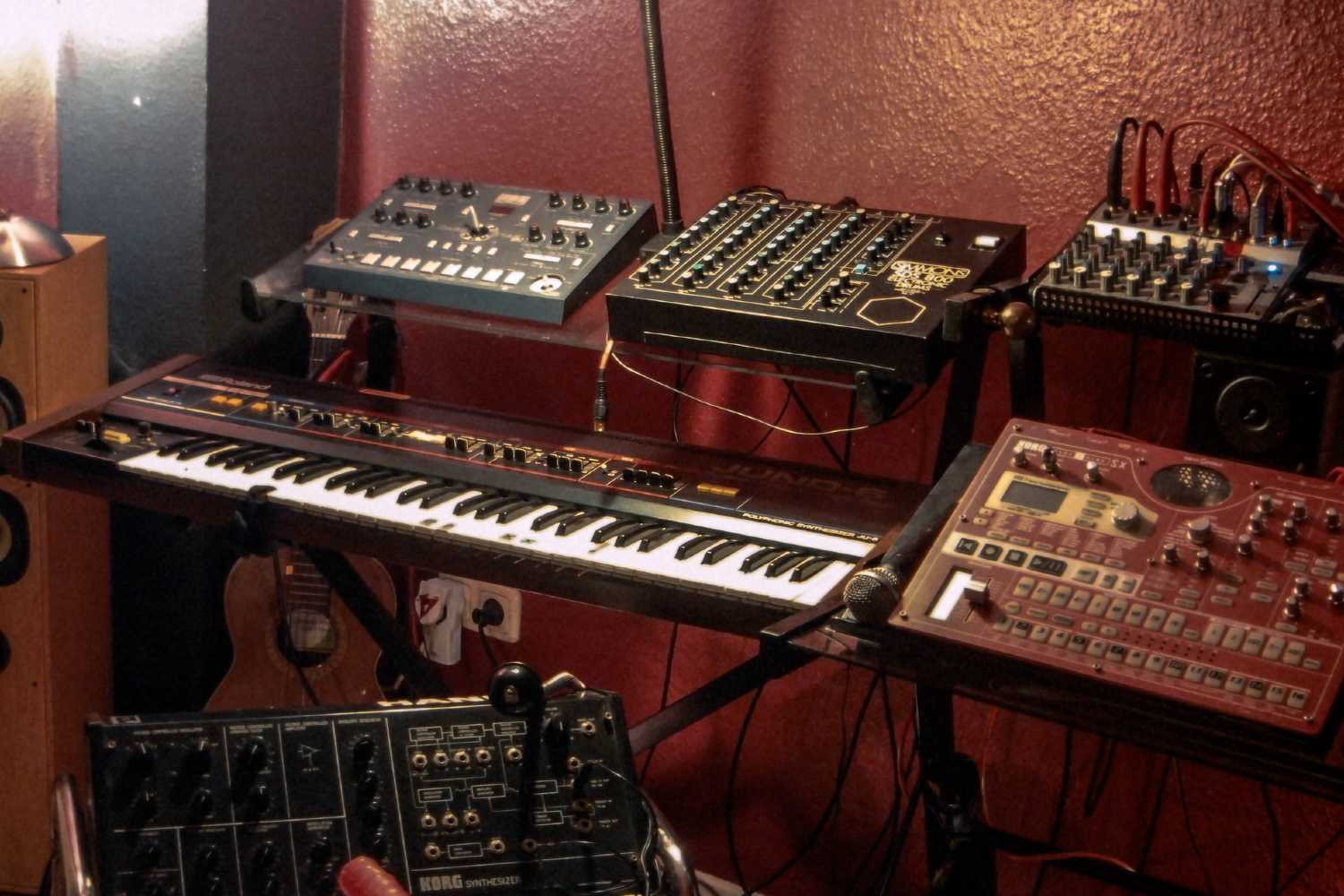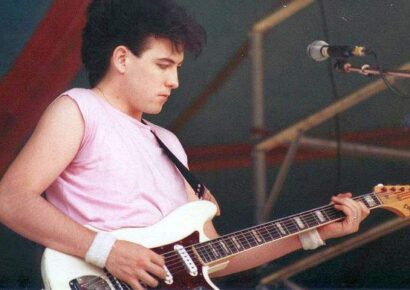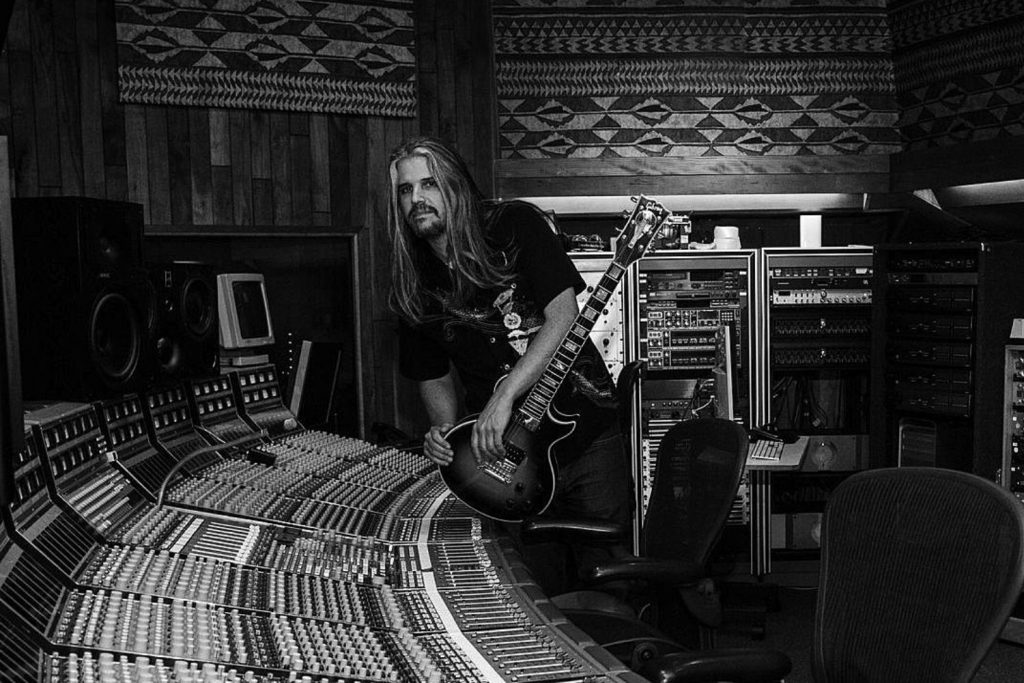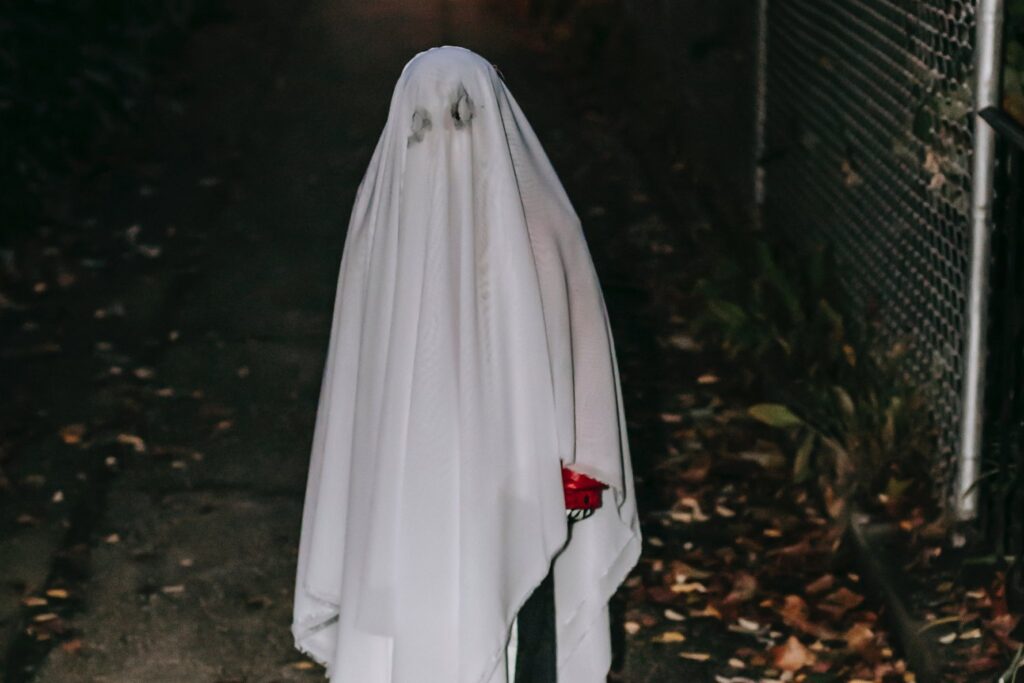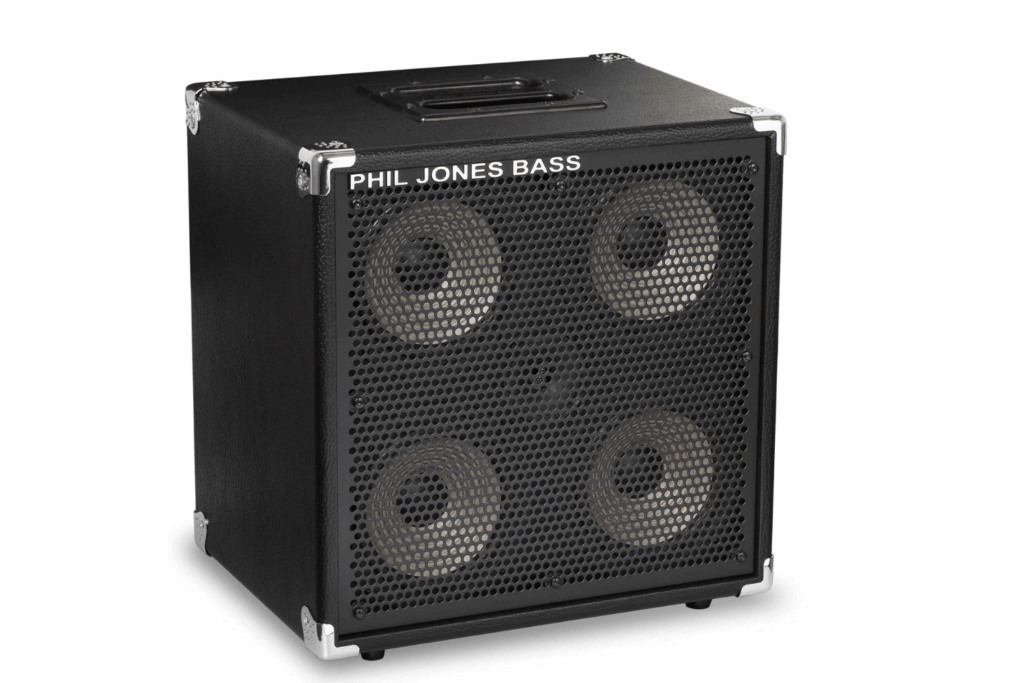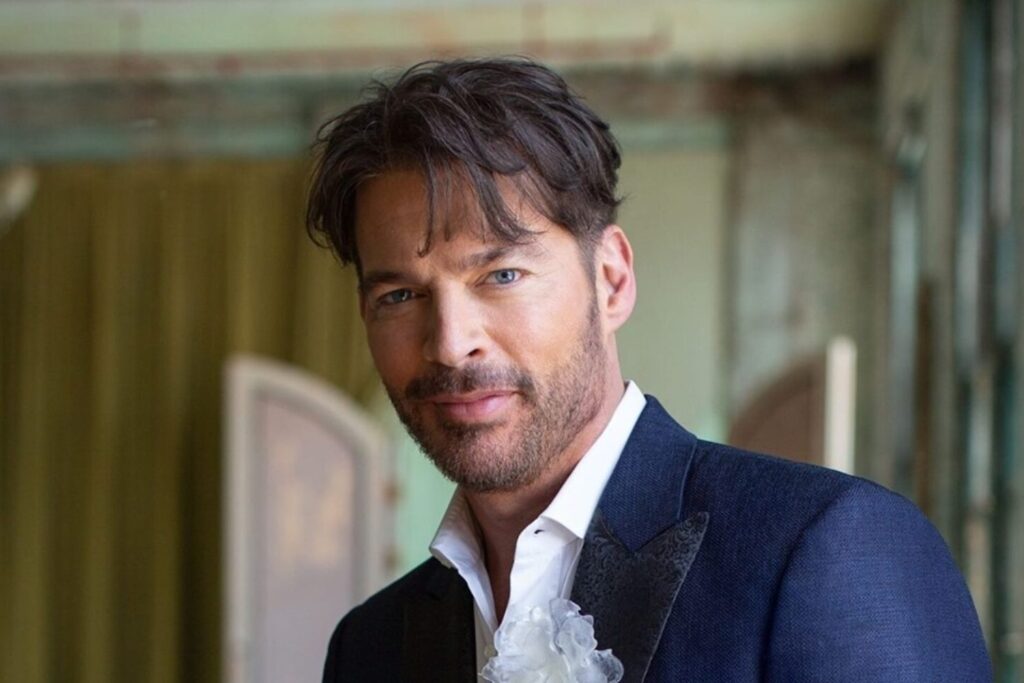Celebrating the classic hardware of the retro era, diving into the best synthesizers of the 1980s.
If there’s any instruments that are synonymous with the 1980s, it’s got to be synthesizers.
An invention of unlimited potential, in the 80s synths became a dominating force; it was a decade obsessed with mapping the future and pivoting away from the past, with several synths going on to become genre-defining instruments years down the path.
Today, we’re hopping into the time machine to explore the stories behind some of the decade’s most famous units and counting down through the classics to bring you the 15 best synthesisers of the ’80s.
Synthesizers
- After being introduced in the ’60s and further developed in the ’70s, synthesisers became a mainstream sensation in the 1980s and helped shape the future sounds of popular music.
- Technological developments such as FM synthesis and affordable analogue components helped make synths more affordable to the average musician.
- Models such as the Prophet 5, SH-101, Juno-106 and DX-7 helped to define the sound of the decade and are still prominently used by many artists today.
Read all the latest features, interviews and how-to columns here.
15. Korg M1
Released in 1988 as a comprehensive music workstation to tackle the market, the Korg M1 was a digital powerhouse by all standards, utilising PCM samples and AI synthesis to replicate every classic synth sound you could ever think of.
This is one of the synthesizers that helped to establish the idea of the digital workstation as we know it today – everything comes back to this thing in one way or another.
While the M1 was released too late in the decade to be a pioneering synth of the ‘80s, it was by all means the dominating sound of the ‘90s, mainly due to the prevalence of its piano and organ sounds in the ever-popular electronic tracks of the era.
Listen to any classic ‘90s house or techno track, and you’ll immediately recognise this one.
14. Ensoniq ESQ-1
If you don’t have the cheese for one of the more famous digital powerhouses and want something that’s got a bit more grime, the Ensoniq ESQ-1 is a savvy pick.
Produced from 1986-88, the ESQ-1 features three DCOs per voice and 32 waveforms, as well as benefitting from a four-pole analogue resonant filter, ring modulator and oscillator sync, making it slightly less metallic-sounding than Roland D-50 or a Yamaha DX7.
It might not be one of the most inviting synthesizers, and the presets definitely aren’t worth writing to home about, but if you put in some effort, the ESQ-1 will reward you beyond your wildest dreams.
13. Casio CZ-101
The Casio CZ-101 is one of the more controversial synths on this list, but given how long it’s lingered against all the odds, I feel it’s worthy of recognition. This little digital fella was debuted in 1984 and makes use of Phase Distortion synthesis – Casio’s own odd take on the digital synthesizers trend of the mid ‘80s.
It’s quite limited and looks like a toy, but the CZ-101 boasts a gritty charm that’s seen it become a sleeper hit in the synth world, making it a no-brainer for anyone seeking quirky vintage tones on a budget. Apparently Mac DeMarco is a huge fan of this series, and it’s also been spotted in the studio with Paul Epworth and Moby.
12. Korg Poly800
Introduced in an effort to undercut the sales of the Juno series, the Poly800 was Korg’s own crack at affordable analogue synthesis, and was marketed towards players looking for an instrument they could take outside of the studio.
Boasting eight voices of polyphony, the Poly800 utilised digitally controlled oscillators (DCOs) for stable performance and a single 24dB low-pass resonant filter to shape its tones, while basic MIDI implementation allowed it to play nice with other instruments.
Although it’s pretty tedious to program, the Poly800 is still one of the most affordable and surprisingly versatile solutions for anyone seeking solid vintage poly-synth tones, with the unit still being used by the likes of Bicep, POND and Shallou today.
11. Roland Alpha Juno 2
Intended as a successor to the dominant Juno series that we all know and love, the Alpha Juno wasn’t exactly one of Roland’s most successful synthesizers of the ‘80s – although it prove important very important in the years to come.
This analogue/digital hybrid saw Roland opt for membrane buttons and dials instead of sliders and buttons, and boasted a soaring LFO and a timbre that made it perfect for squelchy acid basslines.
The Alpha Juno 2 found its niche in the early ‘90s with the dawn of breakbeat, rave and jungle, with cash-strapped producers picking them up on the cheap and using the LFO in conjunction with its chord memory function to create the classic ‘Hoover’ sound. They’re also super affordable and easy to get your mits on today, which is always a big plus.
10. Moog Memorymoog
The Memorymoog was Moog’s last polysynth before the introduction of the mighty Moog One in 2018, and was considered by most to be one of the most powerful synthesizers of the decade.
The ambitious six voice polysynth was equipped with three VCOs per voice and a plethora of modulation options, essentially giving the operator the power of six Minimoogs in one synth.
Perhaps unfairly, the Memorymoog is most remembered for being the straw that broke the camel’s back: it was released around the same time that the MIDI-equipped Yamaha DX-7 burst onto the market.
Moog, unable to keep up with the digital revolution, filed for bankruptcy in 1987, and wouldn’t reemerge until the late ‘90s.
9. Roland TB-303
A ludicrously simple single VCO mono-synth, the TB-303 was originally released in 1982 as an accompaniment to Roland’s TR-606 drum machine, and was marketed as a practice tool to be used by guitarists.
Obviously, the thing sounds nothing like a bass guitar, and naturally, sales went down shit creek, with Roland discounting the unit in 1984.
However, the 303 experienced an unlikely revival with the emergence of acid house, with producers utilising the quirky sequencer and distinctive squelching resonant filter to create some of the most warped, face-melting music of the ‘80s.
Nowadays, original TB-303s are extremely hard to get your hands on, and sell for wild amounts on the web – such is the price to pay for underestimating such a vital machine.
8. Oberheim OB-Xa
Produced in 1981, the Oberheim OB-Xa certainly wasn’t your average analogue synthesiser.
With either four, six or eight voices of polyphony (depending on what model you snagged), the OB-Xa was renowned for its creamy tones via its CEM3320 Curtis chip filters, and the ability to split the keyboard mode to play two patches simultaneously made this one a hit with some of the biggest artists of the era.
Notable examples of the OB-Xa in action include Prince’s ‘1999’ and, of course, Van Halen’s ‘Jump’, with the synth also finding fans in Queen’s Brian May, Gary Numan and Vangelis. They’re pretty hard to come by, but well worth the investment.
7. Roland SH-101
Another classic example of Roland being way too ahead of their time, the analogue SH-101 was released in 1982 and was aimed towards the Keytar market – original units featured a left-hand grip so you could strap the SH-101 on and rock out with it onstage.
While limited to a single VCO, the SH-101 boasted an incredibly useful sub-oscillator, a creamy resonant filter and some impressive modulation capabilities to make it suitable for bubbling leads and cutthroat bass sounds, while the intuitive sequencer made it easy for users to program complex rhythmic patterns.
Like many of Roland’s innovations of this era, the SH-101 was a commercial flop and was discontinued in 1986 before being rediscovered by the burgeoning producers of techno, house and drum ’n bass music in the early ’90s, with notable fans including Aphex Twin, The Prodigy and Squarepusher.
6. Korg Mono/Poly
Possibly one of Korg’s best synths of the era, the Mono/Poly was a knockout analogue unit introduced to the market in 1981.
Boasting four VCOs, two LFOs, pulse-width modulation and a roaring unison mode, the Mono/Poly was very versatile, and the abundance of knobs on the front panel made it perfect for deep diving to create immersive analogue textures.
Perhaps the best aspect of the Mono/Poly, however, was its powerful arpeggiator/sequencer, which allowed users to cycle through each voice for every note or run all four VCOs simultaneously. This one’s a huge hit with anyone making synthwave, and pretty soon, you’ll also be able to snag a Behringer version.
5. Roland Jupiter 8
Now this is a rig and a half! Roland essentially pushed analogue synthesis to its absolute limits with the Jupiter 8, delivering a synth that sounded like nothing before it had without making it as difficult to operate as your average spaceship.
With 16 oscillators, two fat low-pass and high-pass filters, oscillator sync, cross modulation, a lovely LFO and a classic arpeggiator, the capabilities of the Jupiter 8 were beyond belief when it was introduced in 1981, and even today, it’s about as powerful as they come.
Given the sheer size of the Jupiter 8, you’d be hard pressed to spot this on a stage at all, but if you’re in a studio with one of these things, it’s worth your time to sit down and tinker with it. Magical stuff.
4. Yamaha CS-80
One of the biggest and baddest synthesizers of all time, the Yamaha CS-80 was a pioneering unit by all standards.
Weighing a whopping 100kg and accompanied with a huge price-tag to boot, the CS-80 featured eight voice polyphony (16 oscillators, two per voice), a weighted keyboard and polyphonic aftertouch, making it popular with classically trained pianists and devout studio fiends.
Even though it was susceptible to getting a bit wonky when operating in humid conditions and obviously wasn’t very portable, the CS-80 was a revered machine for artists who specialised in studio sessions or soundtracking.
Vangelis employed the CS-80’s sheer soundscaping power for the iconic Blade Runner soundtrack, and it can be heard played by Toto’s Steve Pocaro on ‘Africa’ and all across Michael Jackson’s Thriller.
3. Sequential Circuits Prophet 5
Introduced in 1978, the Prophet 5 was an early dominating force in the ‘80s, and is widely regarded as being the Rolls Royce of analogue synths: it’s simply a masterstroke in design, sound and functionality.
With five voices of polyphony, a classic 24dB low-pass filter, oscillator sync and a white noise generator, the Prophet 5 is a titan for warm pads, basses, leads and whacky effects, and made of use patch storage, which was a groundbreaking feature in the late ‘70s.
From Tears For Fears’ ‘Everybody Wants To Rule The World’ and Talking Heads’ ‘This Must Be The Place’ through to No Doubt’s ‘Just A Girl’ and Radiohead’s ‘Everything In Its Right Place’, the Prophet 5 pops up everywhere throughout contemporary music, and almost certainly exists among the greatest synthesizers of all time.
2. Yamaha DX7
Possibly one of the most important synthesizers of all time behind the Minimoog, the MIDI-equipped Yamaha DX7 introduced the world to Frequency Modulation synthesis, a new multi-timbral approach to sound design that captivated users in 1983.
With six FM operators and 16 voices of polyphony, the DX7 allowed players to replicate just about every instrument or effect imaginable, and the synthesiser quickly became one of the most successful of the decade.
Although it was a nuisance to program (unless your name was Brian Eno), the DX7’s 32 patches proved incredibly popular with users, with presets like the BASS 2, ORCHESTRA, and the classic E. PIANO 1 appearing on just about every ‘80s classic you could think of, from Madonna’s ‘Like A Prayer’, Kenny Loggins’ ‘Danger Zone’ and A-Ha’s ‘Take On Me’.
1. Roland Juno-106
An obvious winner, and a surefire contender for the most recognisable synthesizers of all time, it was always clear the Juno-106 would take the cake here.
Released in 1984, the Juno-106 took everything great about its predecessors (minus the arpeggiator) and offered it in a shiny new package, giving punters access to killer analogue sounds, a creamy 24dB filter, pulse-width modulation and, of course, that gorgeous inbuilt chorus.
It’s capable of smooth pads, fat basses, slinky leads, funky clavinets and so much more, and the immediacy of its interface makes it a go-to for anyone looking to learn the fundamentals of analogue synthesis.
Literally everyone who’s ever been any good at music has owned a Juno-106, and its legacy has only been solidified further over the past decade through its use in music by indie acts like Tame Impala, Mac DeMarco and The War On Drugs, as well as appearing in iconic pop tracks by The Weeknd, Dua Lipa and Bruno Mars.
Chances are when something thinks of synthesizers – or describes a sound as ‘lush’, for that matter – the sound of a Juno-106 is the first thing that springs to mind.
Read more from synth royalty Yamaha here.
